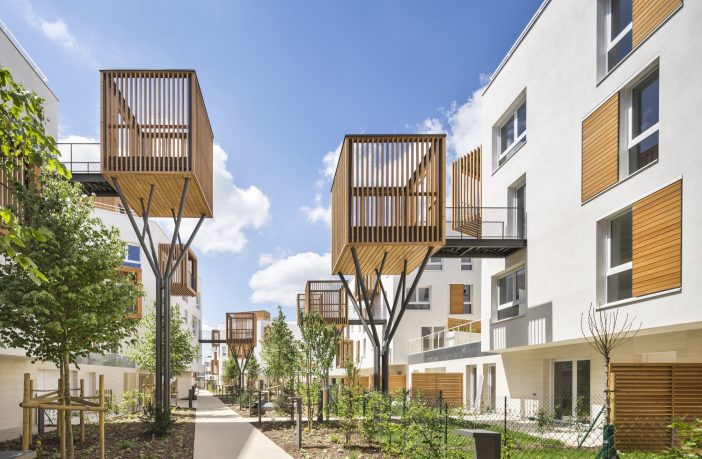- “We need a new spatial contract.” This is the call of Hashim Sarkis, curator of the Venice Biennale 2021, as an invitation for architects to imagine new spaces in which we can live together.
- Between a move towards urban flight and global housing crises, the growth of more low-rise, dense developments may provide an answer in the countryside.
- Turning away from single family homes in rural areas and suburbs, modern housing projects are exploring new models of shared living in nature

As the COVID-19 pandemic spreads, it has exacerbated living conditions. With the possibility of the pandemic stretching on for years, more urbanites have considered the move to rural areas and small towns. As the pandemic’s impact is felt globally, there is a turn towards existing plans, multi-family housing and mobile units. Today, designers are looking to these typologies and how their ideas can be implemented in new settings.
Originally designed as an experimental solution for high-quality housing in dense urban environments, Habitat 67 is one example integrating two housing typologies—the suburban garden home and the economical high-rise apartment building. Illustrating the possibilities of more dense rural environments, the following projects take a look at how multi-unit housing can build new connections between architecture and nature.
Edel Weiss Residence / Matteo Thun & Partners

Built on the highest point of the Katschberg Alpline Pass, 1600 meters high, these two monolithic apartment-towers were made to demonstrate an almost symbolic portal between the two provinces Salzburg and Kärnten and have become the new town’s landmark between the mountains and nature.
San José de la Sierra Building / German del Rio, Nicolas del Rio, Roberto Farias
San Jose de la Sierra is a development of eight apartments within a three story exposed concrete building. The team was challenged to provide a housing alternative that had to convey both the opening and freedom of a house with the security of a flat. The site is located in the foothills of the Andes.
Xixi Wetland Estate / David Chipperfield
Xixi, a national wetland park located on the outskirts of Hangzhou, is a built landscape and an area of nature, which has been shaped by man for over a thousand years. The relationship between landscape, architecture, and water is key to the atmosphere in Xixi. This atmosphere has been integrated into a new development of apartment buildings.
La Escondida Apartments / Francisco Pardo Arquitecto

This housing arrangement adapts to the existing topography by following it. It was designed around maximum density, maximum privacy, and maximum views. The units were made to feel like houses, not apartments, due to the topography and large outside terraces. All units have views to the Pacific Ocean.
Eling Residences / Safdie Architects

Eling Residences are spread across the highest plateau of Eling Hill, adjacent to Chongqing’s well-known Eling Park and overlooking the Yuzhong Peninsula—the central point of the Chongqing municipality—and the Yangtze River. The development contains 126 apartments organized into terraces that echo the slope of the site.
Expandable House / Urban Rural Systems

The expandable house is designed to be one part of a sustainable response to the challenges of development in Indonesia’s Riau Archipelago. The expandable house project focuses on the challenge of housing. It does so by allowing the building to be flexibly configured around the fluctuating patterns of resource consumption and expenditure, or metabolism, of its residents.
Huangshan Mountain Village / MAD Architects
MAD’s scheme for this mountain village is part of a larger tourism masterplan for Huangshan Taiping Lake. Composed in deference to the local topography, each of the buildings are diverse in height and appearance, and have been conceived to ensure that the original mountain levels are maintained.
Author: Eric Baldwin
This article was first published in Arch Daily and is republished with permission.














